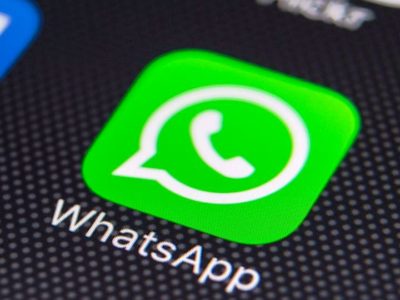ATCON alerts Nigerians on fake news linking 5G to coronavirus
The Association of Telecommunications Companies of Nigeria (ATCON) has alerted Nigerians on fake news making rounds in social media and WhatsApp groups suggesting 5G network causes coronavirus.
In an official statement released in Lagos today, ATCON dismissed the information as baseless and untrue. ATCON is the umbrella body for ICT companies in Nigerian including GSM operators.
Authorities have identified series of bogus news items including audio messages in WhatsApp and social media groups alleging that 5G is the cause of coronavirus deaths in Kano and warning Lagos residents not to allow 5G masts in Nigeria’s commercial capital of over 20 million people.
Nigeria has not launched 5G network. Last week, South Africa’s Vodacom launched 5G services in Cape Town, Pretoria and Johannesburg to become the first country on the continent to switch on 5G.
“We wish to draw the attention of Nigerians to the unfounded claims and misinformation that is trending on all social media like Facebook, WhatsAapp, Twitter, LinkedIn and a host of others, which suggest that Fifth Generation (5G) technology is causative factor of Coronavirus pandemic also known as COVID-19,” said President of ATCON, Olusola Teniola.
The association had weeks back allayed fears over 5G after conspsiracy theories emerged and gained public space linking 5G to COVID-19. ATCON is currently in discussion with stakeholders including the country’s legislators ‘to provide enlightenment and education on 5G.’
“ATCON wishes to inform telecom consumers, other stakeholders and the entire Nigerians, without any equivocation, that the purported claims that 5G is responsible for COVID-19 is baseless and it should be discountenanced by Nigerians as what it is: false information.
“The claims have not been substantiated, by any conclusive empirical evidence, by either the World Health Organisation or other health research institutions.
“There has been no issuance of 5G Licence to any of our members to build and deploy 5G network in Nigeria by the Nigerian Communications Commission (NCC). However, what has happened recently was just a trial of the 5G network by one of our members which was well supervised by the telecoms regulator.
“Currently, Nigeria’s networks are currently made up 3G and 4G and in 2014, the World Health Organisation had stated clearly there there is not yet any conclusive scientific evidence to the effect that there are adverse health effects caused by telecommunications infrastructures to human with respect to exposure to the non-ionising radiation emitting by telecoms base stations.
“ATCON, as the umbrella Association of all telecommunications companies in Nigeria, would like to state unequivocally that it would not be part of the deployment of any technology in-country that would put the health of any Nigerian at risk, as we believe the health of end-users of any technological advancement comes as a priority in the deployment consideration of such technology by our members to provide services to Nigerians.”
FACTSHEET: Five questions about 5G technology answered
Researched by Keegan Leech
We unpack key aspects of this wireless technology, which has in recent months found itself at the fore of public health debate.
In recent months 5G wireless technology has found itself catapulted to the fore of public debate globally. Interest has been fanned by curiosity over what change the new technology brings, but also by concerns over whether it poses any health risks.
Claims that 5G somehow causes or spreads Covid-19 have increased those worries. But these claims have been widely debunked by fact-checkers and many credible sources such as the World Health Organization.
The International Commission on Non-Ionizing Radiation Protection, for example, says these claims are not backed by science, “not even extremely weak evidence”. The commission is the body behind international guidelines on exposure to radiation.
Scientists have said the idea of a connection between Covid-19 and 5G is “complete rubbish” and biologically impossible.
The technology is at various stages of roll-out in Africa, including in Lesotho and South Africa, while countries like Kenya and Uganda are expected to launch 5G networks in 2020.
In this factsheet we answer some frequently asked questions about 5G. How has mobile technology changed over time? What is 5G? And does it have an impact if any on the human body?
1: How has mobile connectivity changed over time?
Before mobile phones could access the internet, they were largely restricted to making calls and sending and receiving short messages, or SMSs. They did this by sending information, like an SMS, to a mobile network that then sent it on to the recipient.
The basic methods used to transmit this information have not changed. They still rely on radio waves, which are also used for radio and television broadcasts and aviation and maritime navigation, among others. They are invisible to the human eye.
Over time, however, the technology used for mobile telecommunication has improved. As a result, cellphones can send and receive more information than just simple SMSes or phone calls, leading to the emergence of the “smartphone”.
Smartphones have greater processing power than the basic “feature phone” and are designed to make better and more varied use of the internet and easily send images or stream videos.
2: What is 5G?
To better understand what 5G is, Africa Check spoke to Nicholas Naidu, the managing executive for technology, strategy and innovation for Vodacom. The South African-based telecommunication company also has operations in other countries on the continent. In May 2020, it launched its 5G network.
Naidu described 5G as “the fifth generation of mobile networking technology”. This is made up of a set of instructions for devices which tells them how to share information, and the technology that allows them to do so.
This suggests there are other “generations” that came before it.
There have been four previous generations, or wireless standards, of mobile technology before 5G, each an improvement on the previous one. These are referred to as 1G (the first generation), 2G, 3G and 4G.
Naidu said that since the advent of 3G, the ability to access the internet on a mobile device has become far more important. 4G was designed to make connections faster and sharing of content easier. But this technology won’t be able to meet the constantly growing demand for internet access in the future.
The International Telecommunication Union forecasts that by 2030, mobile broadband traffic will increase 10 to 100 times. Broadband is a classification for certain high speed internet connections. 5G has been designed to cope with this growth.
How does 5G differ from previous wireless standards?
5G is “not just a faster version of 4G”, Naidu said. It also allows more devices to connect to a network at once. Network speeds will be increased, meaning uploading and downloading information will take less time, as will latency, or the time taken for devices to send signals between one another.
The commission on non-ionizing radiation protection says another key feature of 5G is its beam-forming ability, allowing for the radio signals to be more focused and in turn reducing interference and increasing efficiency.
One of the ways these improvements are achieved is by using different parts of the electromagnetic spectrum.
What is the electromagnetic spectrum?
The electromagnetic spectrum is like a map of the various frequencies at which energy is transmitted through space in the form of waves known as “electromagnetic radiation”.
“Electromagnetic radiation is a form of energy transfer,” Dr Eric van Rongen, the chair of the Germany-based commission on non-ionizing radiation protection told Africa Check. It is most familiar to us as visible light, but there are other frequencies that are invisible to humans.
This spectrum is ordered by frequency, measured in hertz. Radio waves, which have the longest wavelengths of the known waves in the electromagnetic spectrum sit on the lower frequency end, as do microwaves.
On the highest frequency end are x-rays and gamma rays.

3: Which frequencies does 5G use?
5G technology will make use of three radiofrequency bands, according to the US Federal Communications Commission. These are:
- Low-band spectrum – considered to be any radio frequency lower than 1 gigahertz. It includes the frequencies used by 2G, 3G and 4G technologies, as well as digital TV and radio signals
- Mid-band spectrum – has a frequency roughly 1 to 6 gigahertz
- High-band spectrum – above 6 gigahertz
The mid-band spectrum is what Naidu termed “the sweet spot” for 5G, as it had “a good balance between both coverage and capacity”. It is already used across Africa in satellite broadcasts, radar and navigation.
Saul Friedner, who focuses on spectrum services for international spectrum firm LS Telcom, told Africa Check that most 5G networks around the world are making use of frequencies from 3.4 to 3.8 gigahertz.
Van Rongen told Africa Check that wifi technology also makes use of frequencies from around 2.6 or 5 gigahertz.
Some 5G networks, for example in the US and South Korea, use the high-band spectrum, of around 26 gigahertz. But it only provides weak coverage at short distances, and it has a poor ability to penetrate objects, said Van Rongen.
4: Is electromagnetic radiation harmful?
Many conspiracy theories suggest that 5G’s use of electromagnetic radiation is to blame for cancers.
As well as the false claims that 5G causes Covid-19, other concerns have stemmed from the World Health Organization classifying all radiofrequency radiation as “possibly carcinogenic to humans”. But the WHO states that this is not a measure of the risk, and that the evidence for this link “falls short of being conclusive”. Leaf extracts from aloe vera are also placed in this group.
The commission on non-ionizing radiation protection has acknowledged that research into whether this type of radiation is a possible cancer risk is ongoing, but has said (see page 42) that “no effects of radiofrequency [electromagnetic fields] on the induction or development of cancer have been substantiated”.
But what impact does electromagnetic radiation have on the human body?
We asked Van Rongen, chair of the radiation protection commission about this. Whether electromagnetic radiation is dangerous “depends on the conditions of exposure”, he said. He broke these risks down, starting with the highest frequencies to the lowest.
- Gamma rays, x-rays, and other very high frequencies are referred to as “ionising radiation”. They are invisible to the naked eye and are known to cause cancer by breaking the chemical bonds in cells.
- Ultraviolet radiation, also invisible, is emitted by the sun and is a risk factor for skin cancer.
- Visible light includes the familiar colours of the rainbow, from violet, with the highest frequency, to red with the lowest.
- Infrared radiation is invisible to the eye, but can be felt as heat. The infrared radiation from the sun is something that people “often really appreciate”, said Van Rongen. But there is a risk of “dehydration, heat shock and cardiovascular problems”. The same risk is true for lower frequency radiation including microwave and radiofrequency radiation.
- Microwaves are used in microwave ovens and in some communications technology like wifi.
- The lowest frequency, and therefore the lowest energy area of the spectrum, is radiofrequency radiation. This is used by cellphones (including 5G), radios, and other communication equipment.
5: What is non-ionising radiation?
Non-ionising radiation is low frequency radiation. It can heat objects, as infrared radiation does, but cannot cause cancer like ionising radiation.
“The only effect that has been demonstrated with exposure to telecommunication frequencies,” said Van Rongen, “is that the body may heat up.” But to accomplish this, one needs much higher energies than used in telecommunication systems.
To avoid this, there is a comprehensive set of guidelines intended to limit exposure to non-ionising radiation. These include setting maximum limits on the level of radiation that both the public and specialised workers may be exposed to, and they account for both short and long term effects.
Leon du Toit is deputy director of non-ionising radiation and medical devices at the South African Health Products Regulatory Authority.
He agreed that the only effect of non-ionising radiation on the body would be the transmission of heat. Radiation exposure levels around cellular communication equipment are “orders of magnitude lower” than safety guideline limits, he said.
An investigation by the UK’s communications regulator Ofcom found that the highest radiation levels at 22 sites where 5G technology had been implemented were “0.039% of the maximum set out in the international guidelines”.
When signals such as 2G and 3G were included, the highest levels were 1.5% of the guidelines. Further research is underway.
Courtesy: https://africacheck.org/factsheets/factsheet-five-questions-about-5g-technology-answered/





























